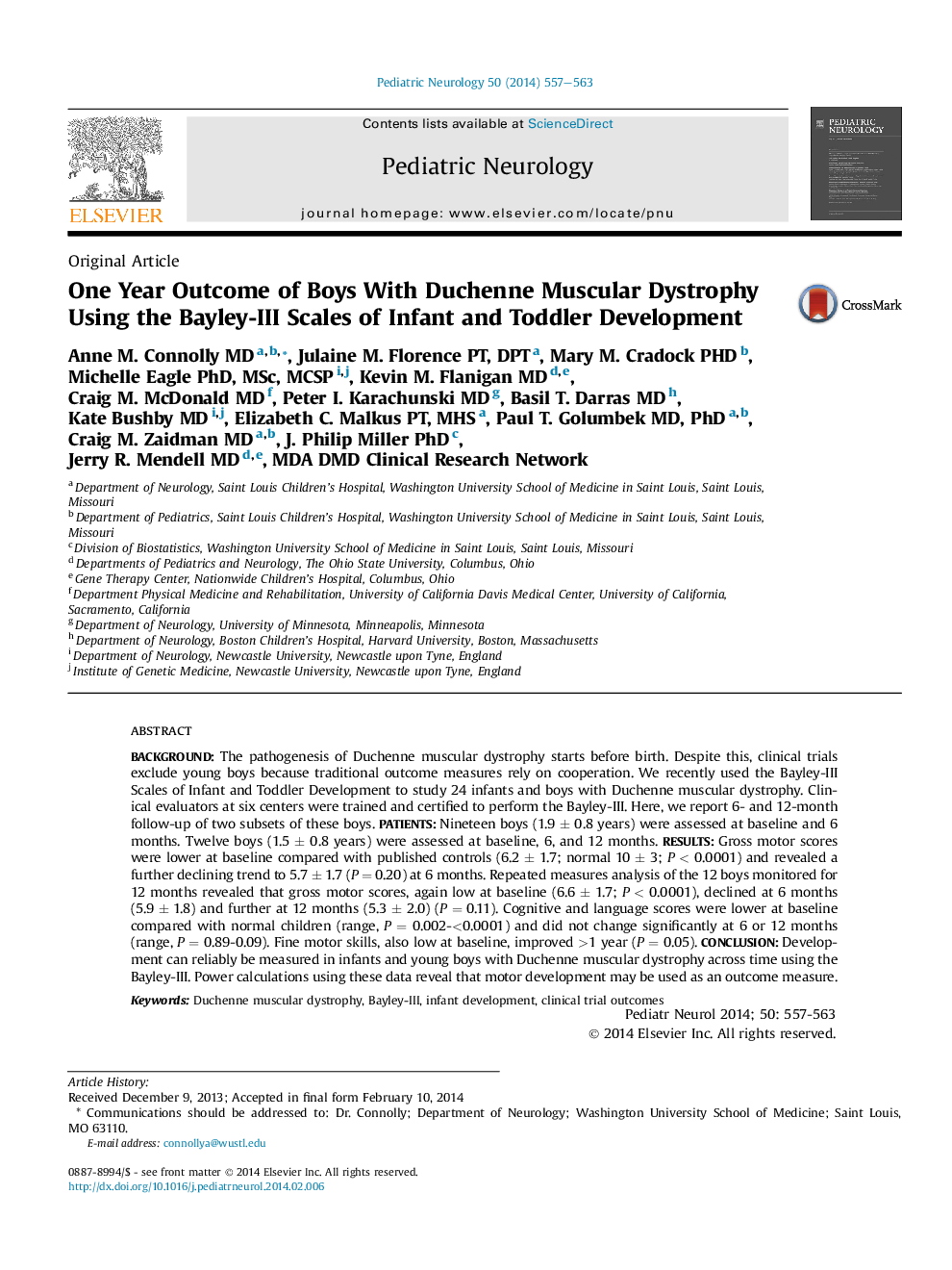| Article ID | Journal | Published Year | Pages | File Type |
|---|---|---|---|---|
| 3084852 | Pediatric Neurology | 2014 | 7 Pages |
BackgroundThe pathogenesis of Duchenne muscular dystrophy starts before birth. Despite this, clinical trials exclude young boys because traditional outcome measures rely on cooperation. We recently used the Bayley-III Scales of Infant and Toddler Development to study 24 infants and boys with Duchenne muscular dystrophy. Clinical evaluators at six centers were trained and certified to perform the Bayley-III. Here, we report 6- and 12-month follow-up of two subsets of these boys.PatientsNineteen boys (1.9 ± 0.8 years) were assessed at baseline and 6 months. Twelve boys (1.5 ± 0.8 years) were assessed at baseline, 6, and 12 months.ResultsGross motor scores were lower at baseline compared with published controls (6.2 ± 1.7; normal 10 ± 3; P < 0.0001) and revealed a further declining trend to 5.7 ± 1.7 (P = 0.20) at 6 months. Repeated measures analysis of the 12 boys monitored for 12 months revealed that gross motor scores, again low at baseline (6.6 ± 1.7; P < 0.0001), declined at 6 months (5.9 ± 1.8) and further at 12 months (5.3 ± 2.0) (P = 0.11). Cognitive and language scores were lower at baseline compared with normal children (range, P = 0.002-<0.0001) and did not change significantly at 6 or 12 months (range, P = 0.89-0.09). Fine motor skills, also low at baseline, improved >1 year (P = 0.05).ConclusionDevelopment can reliably be measured in infants and young boys with Duchenne muscular dystrophy across time using the Bayley-III. Power calculations using these data reveal that motor development may be used as an outcome measure.
